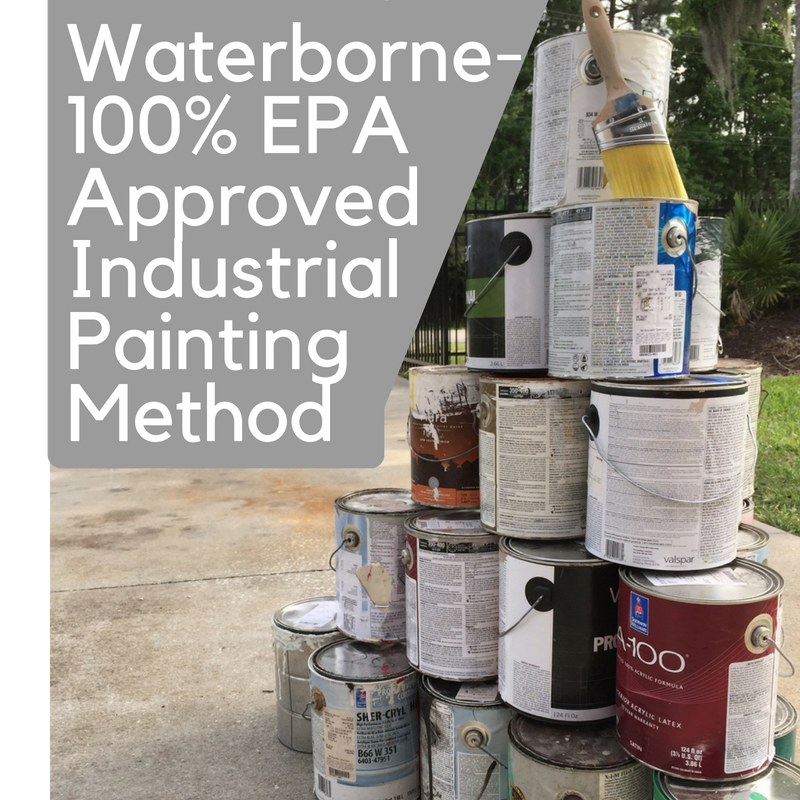
For decades, solvent-based paints have dominated the market, bringing with them a wide array of risks to the environment and personal health. Nevertheless, these paints persisted because they were cost-effective to use and easy to apply. Now, we are starting to see a trend toward waterborne paints instead. This change has been brought about by new painting technologies that make waterborne paint application as simple and effective as solventborne alternatives.
Environmental Regulations
Since the early 2000s, we have seen a sharp increase in the number of regulations that apply to commercial coatings. This increase in legislation is not just happening in the United States but can be seen throughout the global marketplace as well. The primary focus of these regulations has been on volatile organic compounds, or VOCs. As paint is applied, VOCs are sent out into the air where they can be inhaled or absorbed into the atmosphere. Wherever they go, they have been shown to cause damage to public health. Many solvent-based coatings manufacturers have invested in low-VOC processes today, which have helped meet EPA standards. However, as tighter regulations go into play, some companies will still end up paying extra fines and taxes for these solvent-based products. Thus, moving to waterborne solutions will soon be the most cost-effective and logistically sound method of applying coatings.
Improvements in Waterborne Coatings
Driven by the increasing demand for waterborne and latex paints, companies like Dow Chemical have launched huge initiatives to find the perfect formula for their new coatings. The result has been paint products that produce far fewer fumes, adhere to a wider range of materials, and are more durable. In the industrial coatings industry, there is a strong need for coatings that are resilient in a variety of weather conditions and can hold up to some wear and tear without peeling or flaking. As formulas have improved, many companies have added vinyl protective coatings to their waterborne paints to give the paint more flexibility and durability over time.
What the EPA Has to Say
Obviously, all of the above improvements are helping to make waterborne paints more practical for companies to use. They have overcome some of the biggest challenges that industrial companies faced in the past, and can offer much the same level of quality that solventborne paints had for decades as long as care is taken to prep the surface of the material properly. The EPA has also been pleasantly surprised with the results, endorsing the use of waterborne coatings whenever possible. At the federal level, there is a possibility that some of these regulations could be rolled back under the current administration, but states are likely to pick up the slack by creating their own local regulations for VOCs and disposal. Currently, the EPA puts 100% support behind water-based coatings and expects to see the industry grow year after year for the foreseeable future. They contend that these products are now on par with their solvent-based counterparts and have become reasonably affordable for companies to make the switch without taking such a big hit.
Ultimately, waterborne coatings are the way of the future. The housing and construction industries moved toward water-based solutions years ago, but it has taken some time for the technology to catch up to the durability needs of an industrial environment. Luckily, we are closer than ever to seeing a water-based equivalent, and the EPA is making a push for more manufacturers and coatings suppliers to get their heads in the game and make the switch. To learn more about waterborne paint solutions, contact Performance Painting today and speak with one of our experts.






